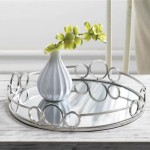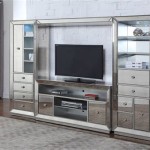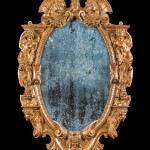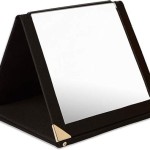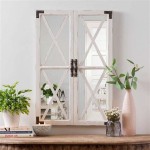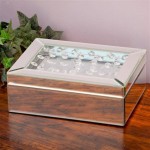Pivoting Bathroom Mirrors: A Comprehensive Guide
Pivoting bathroom mirrors, also known as swivel mirrors, offer a blend of functionality and style. Their adjustable nature allows users to customize the viewing angle, catering to various needs and preferences. This article delves into the key features, benefits, installation considerations, and maintenance aspects of pivoting bathroom mirrors.
Key Features of Pivoting Bathroom Mirrors
Several features distinguish pivoting bathroom mirrors from their fixed counterparts:
- Adjustable Angle: The defining characteristic is the ability to adjust the mirror angle. This allows for personalized viewing experiences for multiple users.
- Mounting Styles: These mirrors can be wall-mounted, cabinet-mounted, or even integrated within medicine cabinets.
- Frame Materials: Frames can be made from a variety of materials, including metal, wood, and plastic, each offering different aesthetic and durability characteristics.
- Mirror Shapes and Sizes: Pivoting mirrors come in various shapes and sizes, ranging from small, circular mirrors to large, rectangular ones, providing flexibility for different bathroom sizes and design preferences.
Benefits of Using Pivoting Bathroom Mirrors
The adjustable nature of pivoting mirrors offers several advantages:
- Customized Viewing: Users can easily adjust the mirror to the perfect angle, accommodating different heights and preferences.
- Enhanced Functionality: The pivoting feature is particularly useful for tasks like shaving, applying makeup, and styling hair.
- Improved Accessibility: These mirrors can improve accessibility for individuals with mobility limitations or those using wheelchairs.
- Space Optimization: In smaller bathrooms, pivoting mirrors can help maximize space by allowing the mirror to be adjusted as needed.
Installation Considerations for Pivoting Bathroom Mirrors
Proper installation is crucial for the functionality and longevity of pivoting mirrors. Key considerations include:
- Wall Type: Identifying the wall type (drywall, plaster, tile) is crucial for selecting appropriate anchors and mounting hardware.
- Mirror Weight and Size: The weight and size of the mirror dictate the strength and type of mounting hardware required.
- Plumbing and Wiring: Careful consideration of plumbing and wiring behind the wall is necessary to avoid damage during installation.
- Height Placement: The mirror should be placed at a height that accommodates all users in the household.
Types of Pivoting Mechanisms
Different pivoting mechanisms offer varying levels of adjustability and stability.
- Two-Arm Pivots: These are the most common type, offering a wide range of motion and good stability.
- Single-Arm Pivots: Typically used for smaller mirrors, these offer less adjustability but a sleeker profile.
- Ball-Joint Pivots: These offer smooth, multi-directional movement, but may be less stable for heavier mirrors.
Maintenance and Care Tips for Pivoting Bathroom Mirrors
Regular maintenance ensures the longevity and optimal performance of these mirrors.
- Cleaning: Clean the mirror surface regularly with a non-abrasive glass cleaner.
- Hardware Check: Periodically check the tightness of the mounting screws and the smooth operation of the pivoting mechanism.
- Lubrication: Lubricating the pivot joints can help maintain smooth movement and prevent squeaking.
Choosing the Right Pivoting Bathroom Mirror
Selecting the right mirror involves considering various factors:
- Bathroom Style: Choose a mirror that complements the overall style and décor of the bathroom.
- Size and Shape: Consider the available space and choose a mirror that fits proportionally.
- Budget: Pivoting mirrors are available at a wide range of price points, allowing for budget considerations.
- Features: Some mirrors offer additional features, such as integrated lighting or magnification, which can enhance functionality.
Common Materials Used in Pivoting Bathroom Mirror Frames
The frame material impacts both the aesthetic and durability of the mirror.
- Metal Frames: Offer durability and a modern look, with finishes like chrome, brushed nickel, and brass.
- Wooden Frames: Provide a classic and warm feel, often finished with stains or paints to match bathroom décor.
- Plastic Frames: A budget-friendly option, often chosen for their resistance to moisture and humidity.
Integrating Pivoting Mirrors into Different Bathroom Styles
Pivoting mirrors can seamlessly integrate into various bathroom styles.
- Modern Bathrooms: Sleek, metal-framed pivoting mirrors complement the clean lines of modern design.
- Traditional Bathrooms: Ornate, wooden-framed mirrors can enhance the classic elegance of traditional bathrooms.
- Transitional Bathrooms: Mirrors with a blend of metal and wood elements can bridge the gap between modern and traditional styles.

Vintage Rounded Rectangle Pivot Mirror Farmhouse Bathroom Mirrors Modern Small

Vintage Pivot Wall Mirror Pottery Barn

Vintage Pivot Wall Mirror Pottery Barn

20 X 24 Farmhouse Black Metal Framed Pivot Rectangle Bathroom Mirro In 2024 Vintage Mirrors Small

Vintage Rounded Rectangle Pivot Mirror Double Sink Vanity Bathroom Interior Design Bathrooms Remodel

A Shiny New Master Bathroom Mirror Table And Hearth

9 Basic Types Of Mirror Wall Decor For Bathroom Printmeposter Com Blog

Vintage Rounded Rectangle Pivot Mirror Bath Wall

Moen Banbury 26 In X 23 Frameless Pivoting Wall Mirror Brushed Nickel Y2692bn The Home Depot

Moen Banbury 26 In X 23 Frameless Pivoting Wall Mirror Brushed Nickel Y2692bn The Home Depot

